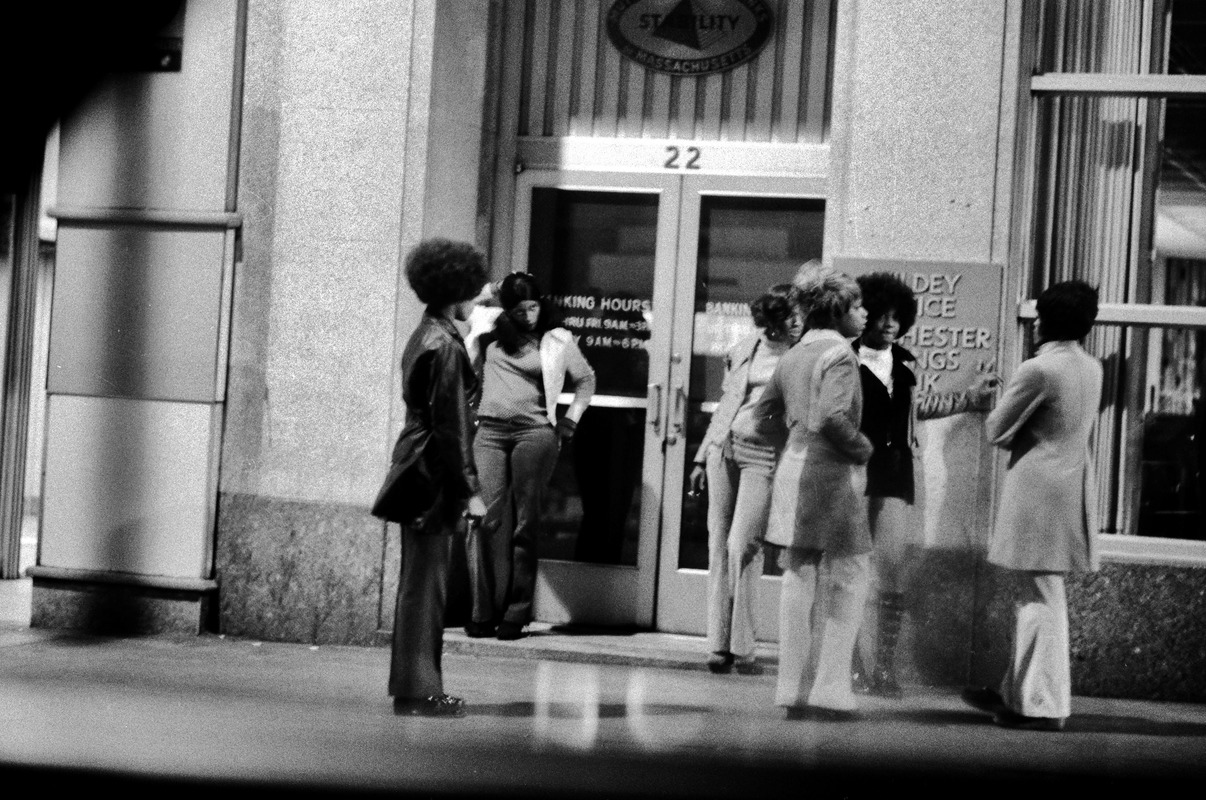Research
Read excerpts of The Streets Belong to Us from the opening chapters and the epilogue
Available for purchase from University of North Carolina Press and local independent bookstores via Bookshop.org
Reviews, Roundtables, and Talks:
Sarah Seo, “The Deep Roots of Sexual Policing in America,” The Atlantic
Marie-Amélie George, review, American Journal of Legal History
Black Perspectives roundtable of The Streets Belong to Us, with Simon Balto, DeAnza Cook, Keona Ervin, Jessica Pliley, Charlotte Rosen, and an author’s response
Harvard Book Store Friday Forum Series, in conversation with Treva B. Lindsey
Conversations in Black Freedom Studies, Schomburg Center, with Dorothy Roberts and Loretta Ross
Praise for The Streets Belong to Us:
“Anne Gray Fischer’s crucial book reveals the utterly pivotal role of the sexual policing of Black women in the vast buildup of police power across the twentieth-century United States. Brilliantly researched and compellingly argued, The Streets Belong to Us is a must-read for all who seek to understand the making of today’s policing crisis.” —Emily Thuma, author of All Our Trials: Prisons, Policing, and the Feminist Fight to End Violence
“Well written, intellectually rigorous, and compelling, this impressive book tackles long-standing issues of policing and gender through the legal policies that impacted American women from the Great Depression to the mid-1990s. Its argument is historical and yet all too timely, making devastatingly clear how women's bodies, and particularly Black women's bodies, were central to strengthening and legitimizing the same carceral policing that violated and oppressed them.” —Cheryl Hicks, author of Talk with You Like a Woman: African American Women, Justice, and Reform in New York, 1890-1935
“This innovative, deeply researched, and forcefully argued book deciphers an overlooked mechanism by which the state executed violence, namely the sexual policing of women’s bodies that legitimated, legalized, and sanctioned the mass expansion of police power. By attending to public morals enforcement over the course of the twentieth century, this book reveals how police power infiltrated the quotidian dimensions of women’s lives, mapping and remapping patriarchal and racial power onto cities’ built environment. This book perceptively shows a process that adapted over time, targeting white women's sexuality during Prohibition, then criminalizing Black women during the era of ‘urban renewal,’ remaking the modern city along sexualized, racialized lines.” —Keona Ervin, author of Gateway to Equality: Black Women and the Struggle for Economic Justice in St. Louis
“This incredibly important book will forever alter the historical record on racialized policing. Fischer shows how the police developed and refined their strategies not by targeting Black men on the street but by targeting Black women—illuminating the centrality of Black women’s sexuality to the entire project of racial spatial control.” —Tricia Rose, author of Longing to Tell: Black Women Talk about Sexuality and Intimacy
Essays adapted from The Streets Belong to Us:
Modern urban law enforcement is characterized by an enduring paradox of underprotection and overpolicing in Black neighborhoods. Throughout the 1960s, Black anger at discriminatory policing was increasingly channeled through communal violence, such as the 1965 Watts Riots in Los Angeles. Working with previously unused police records, this essay exposes a key trigger of the Watts Riots: sexual policing. As the essay shows, liberal legal reforms during a period of Black urban migration and white suburbanization created the conditions for a widening racial gap in the policing of sexually profiled white and Black women—which infuriated Black residents. The sexual criminalization of Black women inaugurated a shift toward expanded police power, but these developments did not occur without a fight.
In the late 1960s and early 1970s, Boston politicians and urban managers sought to reverse the city’s postwar capital drain by luring white consumer dollars and private investment. Their recovery plan featured the Adult Entertainment District (AED), which was established to contain burgeoning sexual commerce while demonstrating the vibrancy and economic viability of the city’s downtown core. At the same time, the changing spatial dynamics of interracial sexual commerce, Black economic isolation, and discriminatory practices citywide drew increasing numbers of Black women onto downtown streets. The presence of Black women in formerly white downtown spaces ignited a powerful law-and-order narrative linking race, sex, and violence. Black women became oversignified with sexual deviance and violent criminality amid the urban crisis. The development of the AED experiment and the raced and gendered crime panic posed unique challenges and opportunities for the Boston Police Department (BPD). Like urban police departments nationwide in the early 1970s, the BPD was embroiled in a battle for its authority. But the deeper motivations of economic turnaround guiding the AED ultimately served to strengthen the BPD’s legitimacy. As the separate goals of political officials and law enforcement authorities converged—to redevelop downtown Boston, and to secure urban authority, respectively—the intensifying policing and spatial banishment of Black women in downtown Boston became central to urban recovery strategies. This history demonstrates that aggressive, racially charged morals policing was deployed to prepare the city for an influx of white capital.



